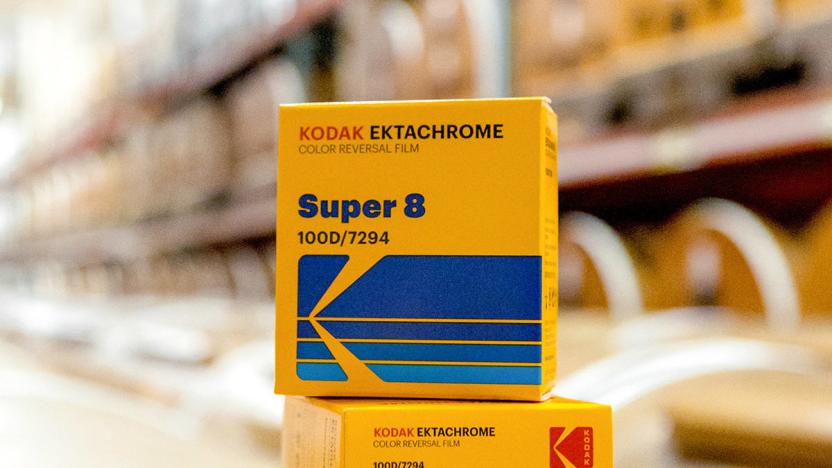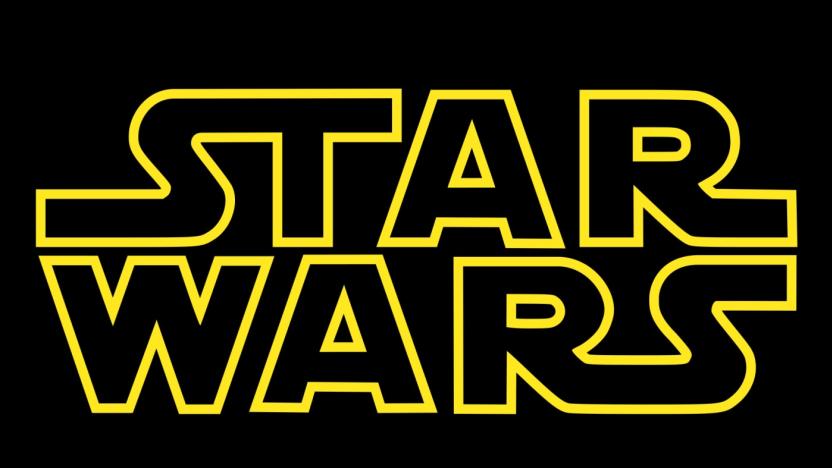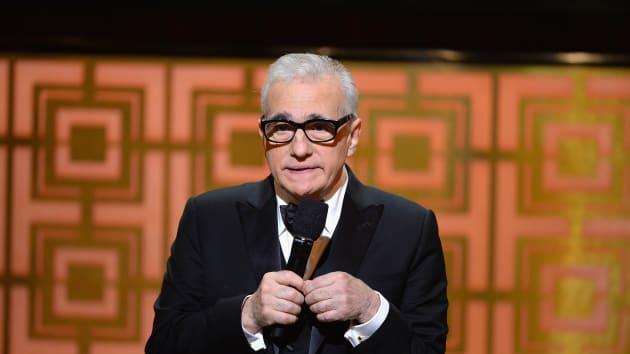celluloid
Latest

Kodak's retro Ektachrome film arrives after a long wait
It took a while but Kodak is finally releasing its Ektachrome color reversal film, beloved by analog photographers and filmmakers alike. First to ship will be Ektachrome Film E100 in 135/36x camera format (which will make its way to buyers immediately) followed by Ektachrome 7294 for Super 8 movie films from October 1st, with 16mm format coming later this year.

Watch the version of 'Star Wars' that George Lucas hates
If you want to watch the original, unaltered version of Star Wars from 1977 legally your options are essentially nonexistent. George Lucas has infamously disowned the original theatrical releases, standing by his CGI-filled Special Editions from the late '90s. If you're willing to bend the law a little bit, though, a fan-restored 35mm print of the original has been floating around the web and garnered a solid amount of interest recently. And until there's an official release of the unaltered trilogy on Blu-ray (keep the hope alive!), it's probably the best way to watch Han shoot first.

Christopher Nolan goes to war in 'Dunkirk'
His last movie took audiences to the other side of a black hole, but director Christopher Nolan's next project is an altogether different trip back in time. Dunkirk tells the story of one of World War II's early battles, where Allied forces were trapped on a French beach. Remember, this was back in 1940 and they were surrounded by German soldiers -- it wasn't a vacation. As he's part of the lobby that pushed film studios to essentially keep celluloid company Kodak afloat, the movie's naturally being shot on large format 65mm film stock in addition to his favored IMAX 65mm.

Martin Scorsese voices support for preserving the future of cinema on film
Saving celluloid film is a big deal for many reasons, and the movement recently got another major voice in its corner. Legendary director Martin Scorsese (Raging Bull, Goodfellas, Casino) has come out in support of the Hollywood coalition to save Kodak. In a statement spotted by First Showing, Scorsese notes the advantages of shooting digitally (like lighter and cheaper cameras), but fervently details why film needs to continue to exist, likening the medium to paintings. "Would anyone dream of telling young artists to throw away their paints and canvases because iPads are so much easier to carry? Of course not."

World's oldest color film footage discovered in museum archive (video)
Cached away for over a century, the world's first color moving pictures have been shown for the first time yesterday, according to the National Media Museum in the UK. The celluloid, shot by inventor Edward Raymond Turner in 1899, was actually in black and white and it was only through a curator's research that its colorful significance was also unearthed. When the footage was first shot, each frame was run consecutively through red, green or blue gels, and the process needed to be reversed during projection to reveal the color. Fortunately, a blueprint by the inventor of how to do just that was also found, allowing the institution's team to replicate the process digitally to produce the final footage. This type of color gel processing didn't take off in the early 20th century due to the mechanical complexity, and it would have been inferior to a chemical process since each frame carried only one-third of the full color information. Still, it required a clever mind to dream it up, with an equally big brain to uncover it and finally give Turner his due. See the video below the break for the stunning un-retouched, non-hand-colored results. [Image Credit: National Media Museum]

Photographer goes digital, blows half a million dollars on a 10MP sensor
Ever spent way too much on a luxury watch or handbag? We hear ya -- the Engadget closet is bulging with Balenciaga clutches we hardly ever take out any more. But do you know who we blame for these inexplicable lapses of consumer judgment? A professional photographer by the name of Mitchell Feinberg, who happens to own the world's largest digital sensor. He uses the $500,000 custom-built 8x10-inch camera back to help capture mouthwatering advertising stills for couture clients like Bulgari and Vogue. What's really loco, though, is that the sensor is only 10MP, which isn't remotely sufficient for printable art. Instead, Feinberg puts it to work as a replacement for Polaroid; grabbing full-size test snaps during a shoot before reverting to an old-fashioned sheet of 8x10 film for the final money-shot. Whereas he previously spent $50k per year on Polaroid stock, now he spends nothing. So, unlike those silly blue-tinted Ray-Bans we bought for our vacation, this block of light-receptive love should eventually pay for itself. (Oh, and speaking of summer breaks, Feinberg says he's currently away on his, but he promises to post some sample pics on his site when he returns.)

Fully working Super8 film projector built totally out of Lego, well almost (video)
Projecting Super8 film is a largely unnecessary hassle these days, but those words are clearly meaningless to camera nut Friedemann Wachsmuth. His painstakingly constructed Lego projector runs at a rickety 24fps without mangling celluloid, and with only the most minor use of non-Lego components (lens, lamp, spindles, bah who's counting?). The contraption serves no purpose other than to hurl photons of pure geek passion at white-ish walls, and previous Lego viewfinders and shutter releases are mere pecks on the cheek by comparison. Turn up your volume before you hit the video because the rattliness of this thing is all part of the love.

ARRI Alexa joins RED to kill celluloid in 2010
Got 50k to spend big daddy? Good, then meet Alexa from ARRI, a German company founded in 1917 that just happens to be the world's largest motion picture equipment manufacturer. Alexa is ARRI's answer to the RED ONE digital, so don't be held captive by your consumer-based experience of what a camera is or what it should look like. ARRI has a trio of cams slated for release in 2010 offering a 3.5k pixel count, 800+ El equivalent sensitivity, 1 to 60fps frame rate, electronic viewfinder and on-board HD recording. The A-EV Plus model adds uncompressed on-board recording and wireless remote control to the 16:9 aspect ratio shooting A-EV. The A-OV Plus switches things up to a 4:3 aspect and adds an optical viewfinder to the mix. The rest of the details will arrive during an April 6th launch event where ARRI will reveal the complete media, format, and what's promised to be a "super fast workflow." Until then, check a side-by-side test done by the cats over at Animation World Network pitting a prototype Alexa against a RED One equipped with a new MysteriumX sensor and software. AWN was so enthusiastic by the results of the two cams that it proclaimed, "2010 is the year that celluloid died." Jim Jannard, RED CEO, graciously responded to the test by saying, "We had expected the images to be very similar and it appears that this test confirms that." He then added the following: "We have believed, since IBC last year, that these two platforms would be the ones standing for the future. We are very proud to be in such good company. But for the moment, we tip our hats to Arri." Now hit the source links for the full read because the future of film looks set to become historic.



